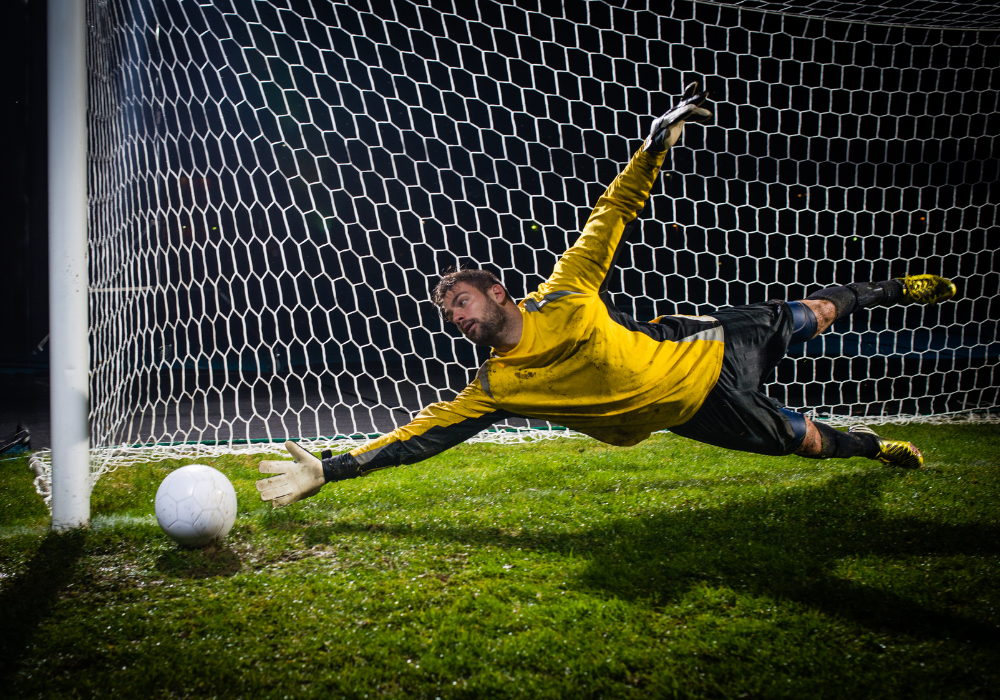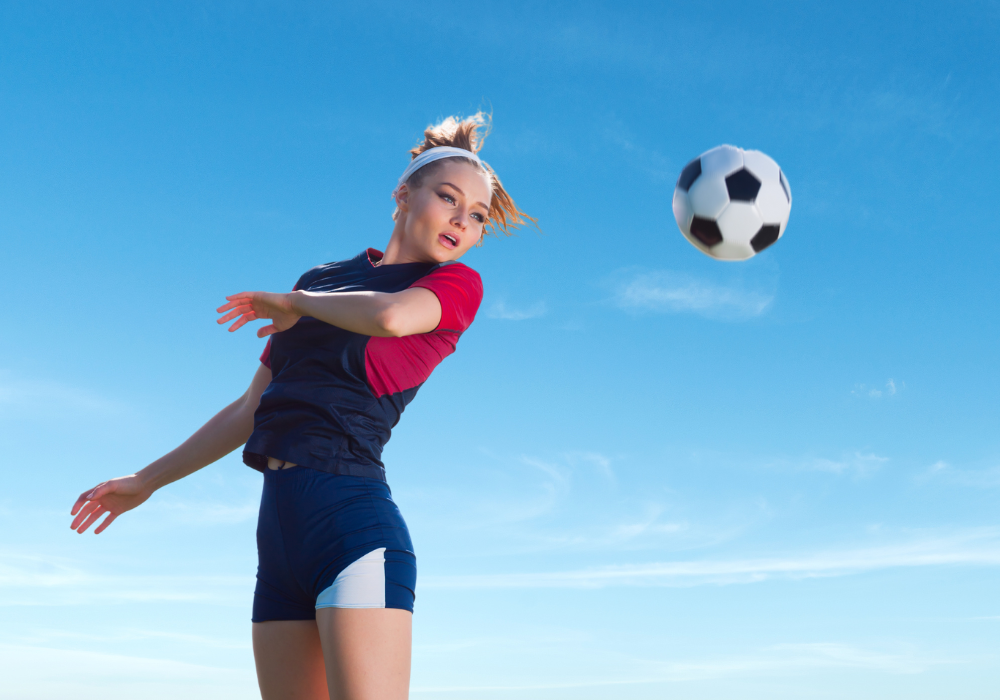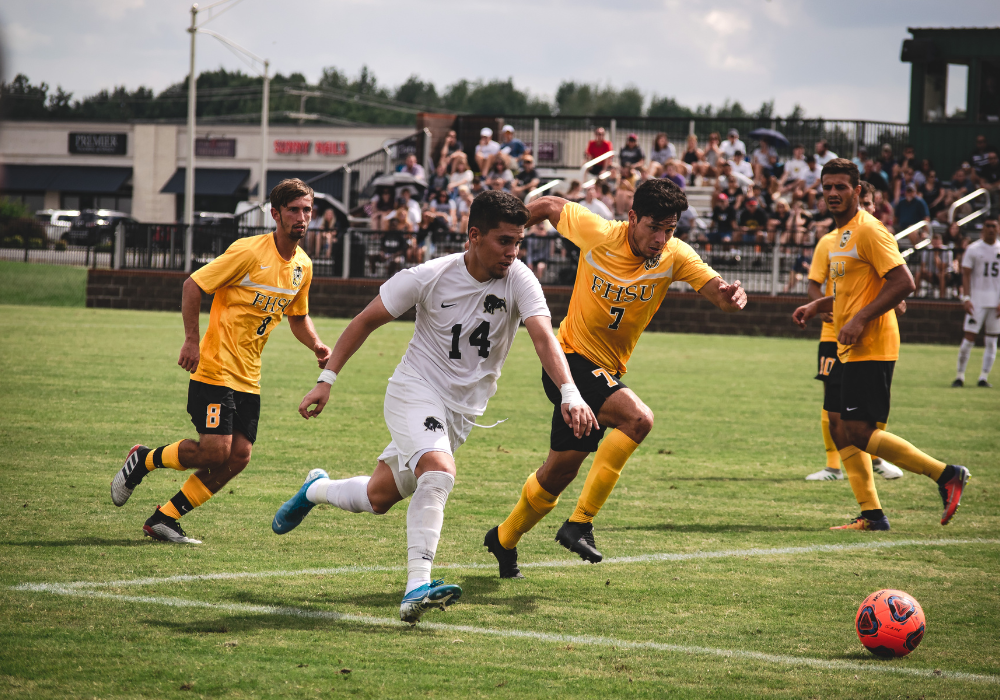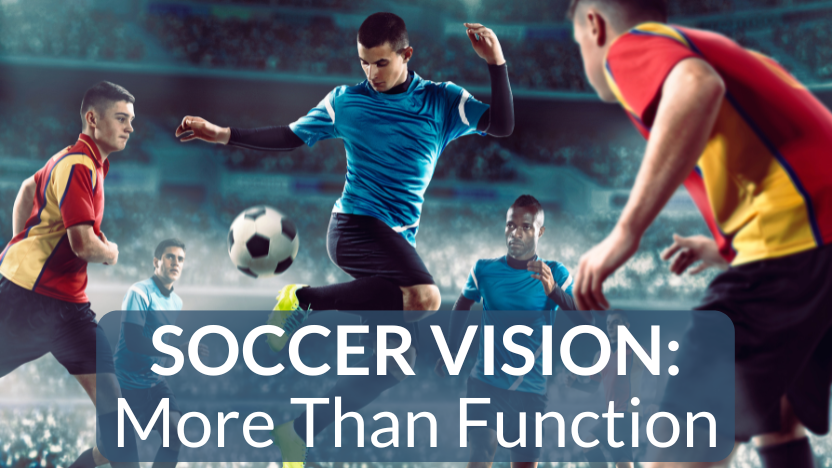Soccer Vision: What Is It and How Can You Improve It?
Posted by EyePromise on Mar 20th 2024
Soccer is a complex game. With 22 players on the field at all times and a ball that can speed, spin, and soar through the air, there are many moving parts to try and have eyes on. That’s why vision is critical to the game, but we’re not just talking about actual sight. Soccer vision is one of those “intangible” skills that needs to be intact for a player to be successful.
What’s Soccer Vision?
Soccer vision can be defined in many ways, but essentially, it’s the visual and mental perspective that influences the game. Not only do players need to physically see the field, but they need to be able to mentally perceive the action taking place.
Seeing the Field
Let’s talk about the visual functions that are utilized most while playing soccer.
Dynamic Visual Acuity

Visual acuity is the clarity and sharpness of your vision with stationary objects. It’s what gets measured using an eye chart. Dynamic visual acuity is the ability to see moving objects clearly. This visual function is critical to soccer players because both the ball and the players are moving almost constantly on the field.
Eye Tracking
Eye tracking helps players keep their eye on the ball as it moves around the field without needing to move their head. This ability is critical for maintaining balance and for maximum deception. If you turn your whole head in the direction you want to go, then your opponent knows your plan. However, a quick dart of the eyes in that direction, and the opponent is none the wiser.
Eye Focusing
Eye focusing helps players change focus quickly and accurately, whether it’s adjusting between distance and near vision or between two other players on the field. This visual function is also necessary for seeing spin or movement of the ball.
Visual Concentration
Visual concentration is like blinders for players, helping them focus on the play vs. other distractions that may be present (fans, referees, coaches, etc.).This is extremely helpful when the opposing team has heckling fans, but it’s also helpful when a defender is trying to focus on the ball, not the player’s fancy footwork.
Depth Perception
Depth perception helps players judge the speed and distance of objects effectively and efficiently. It helps when a midfielder is trying to time a pass to an on-running forward or when a defender is trying to time a head ball to clear a cross. Depth perception is also used when avoiding situations, like slide tackles or a leaping goalie.
Eye-Foot Coordination

Like hand-eye coordination, eye-foot coordination enables players to react to visual stimuli accurately. “Accurately” refers to the physical movement itself, the location/direction of the movement, and the timing.
Peripheral Vision
Peripheral vision is what you see outside of your central vision. It helps players to see everything around them without having to actually look at it, so a forward can take on a defender and never lose sight of the ball.
Speed and Span of Recognition
Speed and span of recognition is the function that helps soccer players recognize and react to stimuli quickly. The span of recognition is the physical visual field that the player observes, while the speed of recognition is the time it takes for the eyes to receive information, send it to the brain to determine what it is and how to respond, and the brain to tell the body to complete the action. This is also known as visual processing speed.
Perceiving the Game
“Perceiving” the game is how we’ll distinguish the mental from the physical vision. Let’s get into it.
Be aware of everyone’s position on the field.
Most players can physically see the other players on the field (if not, they should see an eye doctor!), but being aware of everyone’s position is much more of a mental battle, and knowing what to do about it is an even bigger challenge. Using several of the functions listed above like peripheral vision, speed and span of recognition, and even depth perception, a soccer player needs to know what options they have for passes as well as his/her potential defensive position needs to be should there be a turnover.
Get your head up quickly when you have the ball.
Like the example used in the peripheral vision section, when a forward is taking on a defender, they need to know where that player is as well as where the ball is. It’s critical for that forward to be able to get their head up, keeping the ball in sight using peripheral vision, and using other visual functions to see where exactly the defenders are, what paths are open, and how to proceed. This mental skill comes with time and practice.
Get used to scanning the field routinely.

Going back to the first point, knowing where everyone is at all times makes it easier to make quick and effective decisions. Keeping the head up and on a swivel helps players continue to intake information and know what to do next if the ball comes to them. If a player is looking after they already have the ball, many of the options that were present before may be taken away by defensive positioning, so practicing this skill can help players be more effective on the ball.
Look for opportunities to make runs and for those players making runs.
Dynamic play comes from soccer players never being stationary, and this movement requires all the mental and visual skills already mentioned. Not only do athletes need to know where defensive players are, but they need to be aware of the runs/movements of their own teammates so they don’t occupy the same space. Then, there’s the person with the ball who also needs to know where the defenders are, where their teammates are running, and which opportunities best suit their skillset (i.e., can they play a long ball accurately or should they take on a player or two to move into open space and buy time?).
Talk with the team.
As with most team-oriented sports, communication is key in soccer. When a team communicates between players, the visual field becomes the field, because there are 22 eyes seeing and perceiving together. Calling out positions or defensive marks helps everyone be aware of surrounding opponents and opportunities.
EyePromise® for Soccer Vision
While becoming comfortable with these different visual and mental skills takes practice, soccer players can improve their visual and cognitive functions through nutritional supplementation. Specifically, supplementing with EyePromise eye health performance supplements has been demonstrated to improve:
- Visual acuity
- Contrast
- Visual range
- Peripheral vision
- Light sensitivity
- Glare recovery
- Photostress recovery
- Visual processing speed
- Focus
- Decision making
EyePromise performance supplements are designed with high-quality, natural ingredients backed by 30+ years of clinical data, are NSF Certified for Sport, and are trusted by professional and collegiate athletes across the country. Learn more about how EyePromise’s eye health performance supplements can impact game-time performance.
There’s no “easy button” when it comes to soccer performance, but EyePromise can help. Start your performance journey today!


